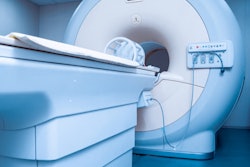
A new analysis of imaging utilization during the COVID-19 pandemic demonstrates the outbreak's more severe impact on people of color and those of lower socioeconomic status, according to research published online ahead of print on October 29 in the Journal of the American College of Radiology.
Researchers found that significantly more medical imaging procedures were performed during the COVID-19 pandemic on older patients, males, and nonwhite racial groups, as well as among lower-income-earning patients. In addition, more individuals on Medicaid or who were uninsured underwent imaging.
But younger patients, females, whites, those commercially insured, and those at higher income levels received significantly less imaging during the post-COVID-19 period, according to a research team led by Dr. Jason Naidich, senior vice president and regional executive director at Northwell Health of Manhasset, NY.
Naidich et al undertook the study to evaluate socioeconomic factors that might be related to imaging utilization during the pandemic. Although much is now known about the pandemic's impact on imaging volumes, there is little information about how COVID-19 affected imaging utilization among different socioeconomic groups, Naidich et al wrote. Learning how social determinants may affect imaging utilization can help healthcare providers appropriately allocate imaging resources.
Therefore, the researchers undertook a retrospective review of the radiology invoices in the charge master at Northwell from a pre-COVID-19 period (January 1 to February 28) and a post-COVID-19 period (March 1 to May 31). They also compared year-to-year data for the location of service.
First off, they found major changes in the location where imaging was being performed. In 2020, emergency department imaging made up 42% of all scans, compared with 39% in 2019. Inpatient exams made up 33% of studies in 2020, compared with 24% in 2019, while in 2020 outpatient exams made up 25% of the total, compared to 37% in 2019. One possible explanation for the decline in outpatient imaging services during the pandemic is that patient groups were delaying nonessential or routine care.
When stratified by socioeconomic factors, the 2020 and 2019 trend data for total imaging case volume during the study period revealed a pattern of changes, with statistically significantly increased imaging utilization among patients ages 60 to 79 and among males, as well as higher use by races other than white and by patients on Medicaid or who were uninsured.
| Image utilization by race during COVID-19 | ||
| Pre-COVID-19 | Post-COVID-19 | |
| White | 55.67% | 49.54% |
| Other | 17.06% | 20.85% |
| Black | 15.90% | 17.08% |
| Asian | 6.43% | 7.17% |
On the other hand, there was a statistically significant trend toward lower imaging utilization among younger patients less than 18 years old, among females and white patients, and in those who were commercially insured patients.
On an income basis, imaging use grew among patients in lower income brackets, specifically those making less than $60,000 and from $60,000 to $79,999. Imaging utilization dropped in higher-income brackets of $80,000 to $119,999, $120,000 to $149,999, and $150,000 or more.
| Imaging utilization by income during COVID-19 | ||
| Pre-COVID-19 | Post-COVID-19 | |
| >=$150,000 | 4.5% | 3.8% |
| $120,000-149,999, | 17.2% | 15.6% |
| $80,000-119,99, | 41% | 39.6% |
| $60,000-79,999, | 26.1% | 27.7% |
| <$60,000; | 11.3% | 13.3% |
Unemployment caused by the pandemic may have caused many to lose their medical insurance, and this may have disproportionately impacted those patients who had commercial insurance and those in lower-income households.
Insurance status and income level varied, depending on the service location. In emergency departments, commercial insurance and income levels of $80,000 or more had significant negative associations with imaging utilization. In contrast, in outpatient locations these higher income levels had more imaging procedures.
The authors concluded by stating that stratifying imaging utilization based on socioeconomic factors may help predict the demand for imaging services during a resurgence of COVID-19.



















